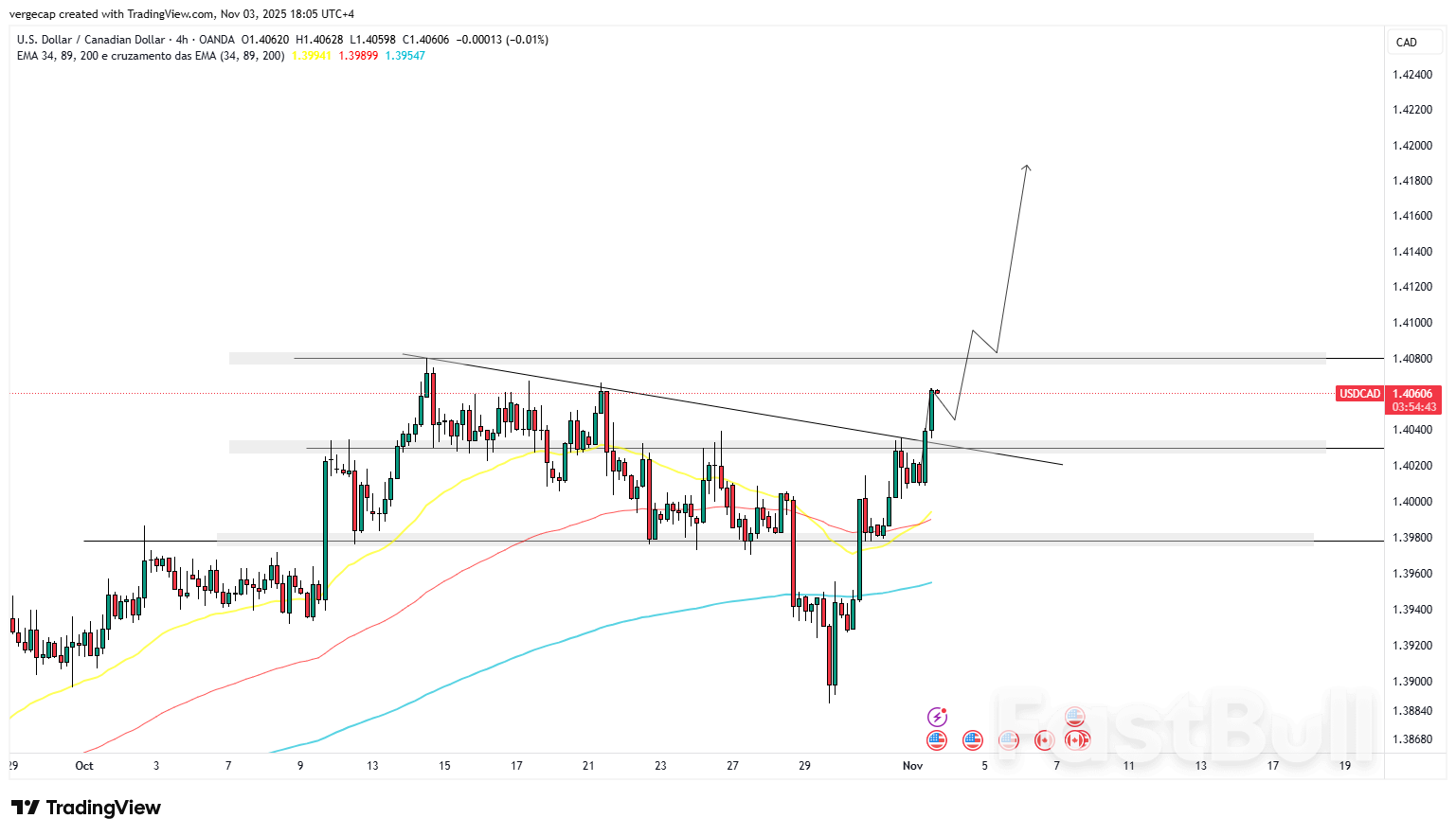The U.S. Dollar to Canadian Dollar (USD/CAD) pair maintained a modest upward bias on Monday, trading around 1.4040, up 0.20% on the day. However, its momentum appeared to stall just below the 1.4050 resistance level as traders weighed the competing forces of Federal Reserve policy signals, weakening oil prices, and prolonged political uncertainty in Washington.
The Loonie’s struggle to regain ground comes as the broader market narrative tilts in favor of the greenback. A cautious yet hawkish tone from the Federal Reserve has helped bolster the U.S. Dollar, which continues to benefit from shifting interest rate expectations. Meanwhile, a steep retreat in oil prices—Canada’s most critical export—has further eroded the Canadian Dollar’s short-term outlook, leaving it vulnerable to further downside pressure.
Fed’s Hawkish Pause Boosts USD Sentiment
Following last week’s Federal Reserve policy meeting, Chair Jerome Powell adopted a more guarded approach to rate cuts, pushing back against market speculation of further monetary easing this year. During his post-meeting press conference, Powell said that another rate cut in 2025 was “far from certain,” stressing that policymakers needed to wait for the resumption of official economic data amid the ongoing U.S. government shutdown.
This shift in rhetoric triggered a recalibration in market expectations. The CME FedWatch Tool now shows the probability of a 25-basis-point rate cut in December falling to 69%, down sharply from over 90% before the meeting. The change underscores growing uncertainty about the Fed’s next move, especially as inflation remains sticky and labor market resilience tempers calls for aggressive easing.
The result has been a stronger U.S. Dollar across the board, supported by cautious risk sentiment. As the U.S. government shutdown drags into its sixth week—the longest in modern history—investors remain wary of the potential drag on growth and consumer confidence. Yet paradoxically, this political deadlock has reinforced safe-haven flows into the greenback, contrasting with the weakness seen in commodity-linked currencies like the Canadian Dollar and Australian Dollar.
Oil Weakness Amplifies Pressure on the Loonie
Crude oil, Canada’s lifeblood export, remains under pressure. West Texas Intermediate (WTI) futures retreated toward $60.50 per barrel after briefly breaching $61 earlier in the session, erasing earlier gains fueled by geopolitical jitters and OPEC+’s production plans. Although the cartel confirmed it would pause planned output increases starting in early 2026, the rally faded as the U.S. Dollar strengthened and demand concerns resurfaced.
The recent slide in oil highlights how global energy markets remain highly sensitive to U.S. policy and demand indicators. With China’s manufacturing sector stagnating and European industrial output showing little sign of recovery, the demand outlook remains subdued. For the Canadian Dollar, this dynamic is particularly damaging. As a net exporter of crude, weaker oil revenues tend to dampen Canada’s trade balance and GDP growth prospects, amplifying downside risks for the CAD.
Commerzbank analysts noted that “a sustainable appreciation of the Canadian Dollar is still some time away,” citing trade frictions with Washington and an uneven domestic economic recovery. With the Canadian economy showing tepid momentum and inflation hovering near target, the Bank of Canada is likely to remain cautious, reducing the policy divergence buffer that could otherwise support the Loonie.
Technical Analysis
From a technical standpoint, USD/CAD continues to exhibit a bullish pattern, forming higher highs and higher lows on the daily chart—a structure consistent with trend continuation. The pair has broken above a short-term bearish corrective trendline and remains supported by the 50-day exponential moving average (EMA50).
Momentum indicators suggest that the pair is regaining upside strength after offloading overbought conditions. The emergence of a bullish crossover on oscillators such as the Relative Strength Index (RSI) reinforces the case for renewed buying interest. A key daily demand zone between 1.3948 and 1.3890, which serves as a potential launchpad for another leg higher.
We are watching 1.4050 as the immediate resistance to beat, followed by 1.4240 as the next target. A sustained break above 1.4050 could confirm renewed bullish momentum, while failure to hold above 1.3948 would risk a pullback toward the 1.3875 stop-loss level.
TRADE RECOMMENDATION
BUY USDCAD
ENTRY PRICE: 1.4060
STOP LOSS: 1.3875
TAKE PROFIT: 1.4240













